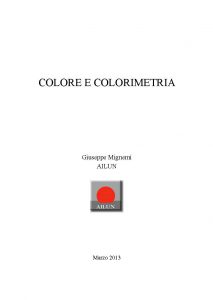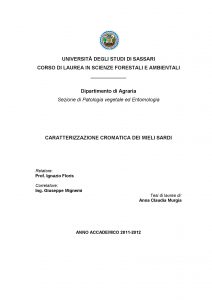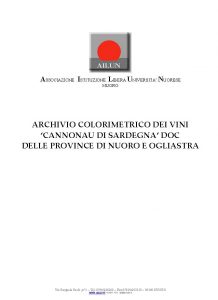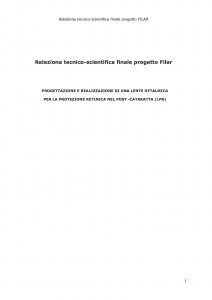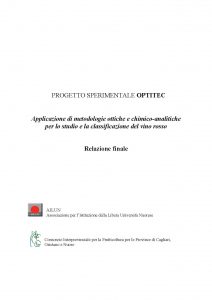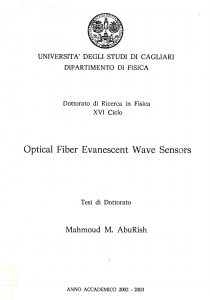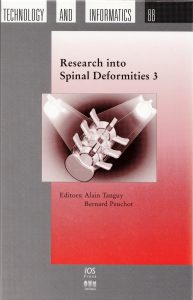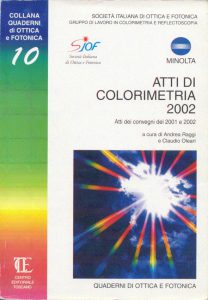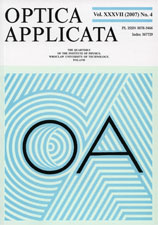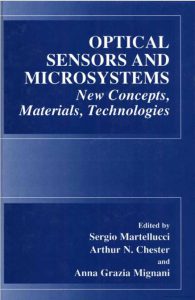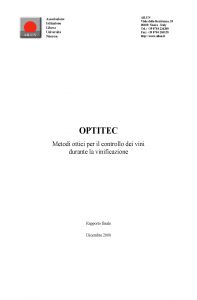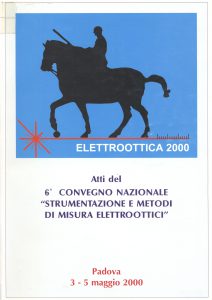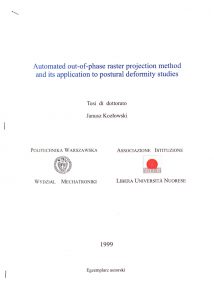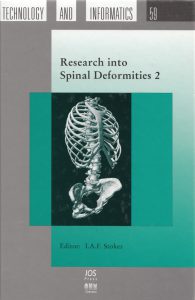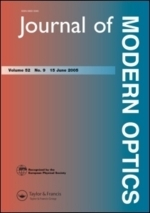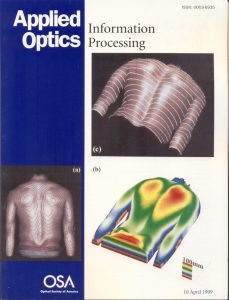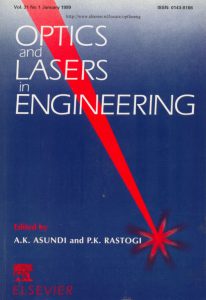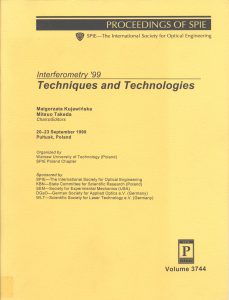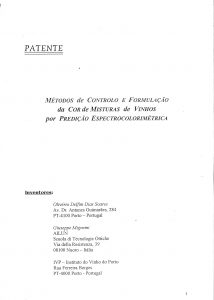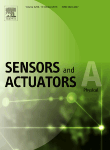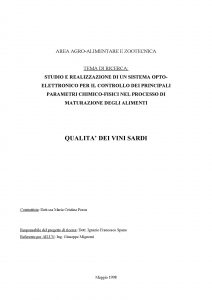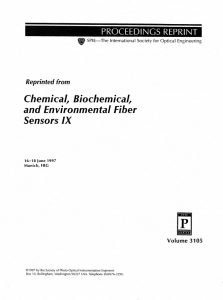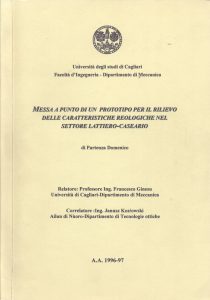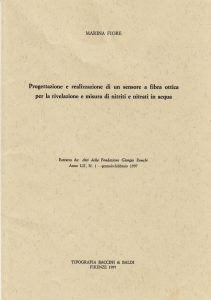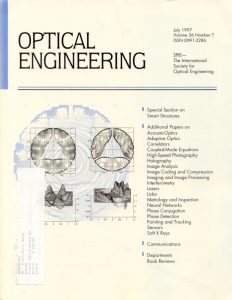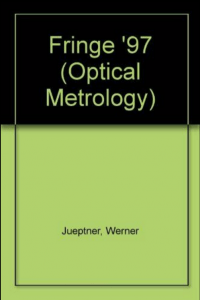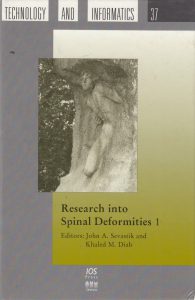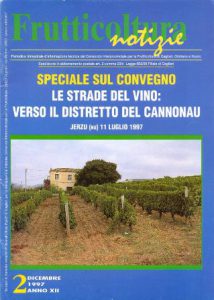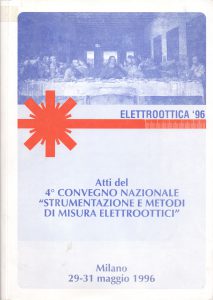Mignemi G., Colore e Colorimetria, p. 28, AILUN, Nuoro (2013).
Abstract. Il documento presenta un’introduzione alle procedure di misura del colore raccomandate dalla CIE (Commission Internationale de l’Eclairage) con alcuni cenni sulle basi fisiche e fisiologiche della percezione del colore.
_____
Murgia A. C., Caratterizzazione cromatica dei mieli sardi, Tesi di Laurea in Scienze Forestali e Ambientali, Università degli Studi di Sassari (A.A. 2011-2012).
Abstract. L’obiettivo principale della tesi era quello di applicare alla misura del colore del miele la procedura tristimolare CIE (coordinate CIELAB) e metterla a confronto con le metodologie usualmente adottate, con specifico riferimento alla caratterizzazione cromatica dei mieli uniflorali prodotti in Sardegna.
_____
Mignemi G., Progetto INVITO – Scheda tecnica, AILUN, Nuoro (2009).
Abstract. Il progetto ha come obiettivo quello di realizzare un archivio colorimetrico della produzione di Cannonau di Sardegna DOC delle Province di Nuoro e dell’Ogliastra, adottando una procedura di misura strumentale del colore del vino standardizzata basata sulla colorimetria CIELAB, e di individuare di conseguenza in maniera oggettiva e descrivibile numericamente il range colorimetrico tipico del vino Cannonau DOC, facendo anche riferimento alle sue diverse tipologie, sottodenominazioni e aree di provenienza geografica.
_____
Mignemi G., Relazione finale del progetto “Progettazione e realizzazione di una lente oftalmica per la protezione retinica nel post-cataratta”, AILUN, Nuoro (2008).
Abstract. Sono state effettuate le misure dello spettro di trasmittanza de una serie di lenti prototipo realizzate presso la sede della Filar. Lo scopo delle misure era la verifica della concordanza dello spettro di trasmissione delle suddette lenti con quello teorico desiderato, progettato in precedenza sulla base delle esigenze cliniche relative alla protezione dell’occhio dopo la sostituzione del cristallino naturale con una lente intraoculare (pseudofachia susseguente ad operazione di cataratta).
_____
Mignemi G., Relazione finale del progetto “OPTITEC 2”, AILUN, Nuoro (2004).
Abstract. Il progetto, in collaborazione col Consorzio Interprovinciale della Frutticoltura delle Province di Cagliari ed Oristano e sei aziende vitivinicole, prevedeva la misura del colore e di parametri chimico-analitici di uve, mosti e vini con particolare riferimento al loro corredo polifenolico ed in relazione a diversi protocolli di vinificazione.
_____
AbuRish M.M., Optical fiber evanescent wave sensors, Tesi di Dottorato in Fisica, Università degli Studi di Cagliari (A.A. 2002-2003).
Abstract. In this thesis, the major theoretical issues of optical fibers implemented in the fabrication of evanescent wave sensor devices are reviewed, and state of the art physics and technology of the OFEWS question are summarized. Investigation of the devices’ sensitivity improvement issues with various techniques applied to optical fibers are also presented. Alongside, assortments of optical fiber evanescent wave sensors are experimentally assembled and tested for chemical, mechanical, and environmental monitoring purposes. Comparison and potential match are also sought between the experimental results and the theoretical predictions based on the diverse discussed models whenever it is applicable.
_____
Kozlowski J., Merolli A., Monni G., User Friendly Computer Profilometry, in Research into Spinal Deformities, pp.110-115 (2002).
Abstract. Portable optical profilometer for measurement and analysis of the human back shape has been developed. The driving user friendly software includes correction of distortion of the observation lens, data calibration, three-dimensional Z-axis rotation of the patient normalizing his position, calculus of the curvature map (second derivative), and precise indication of different characteristic points of the back including the spinous processes line. This instrument enables the examination of the back in both erected and bent positions.
_____
Mignemi G., Controllo Colorimetrico dei Vini Durante il Processo di Vinificazione, in Atti di Colorimetria 2002 (2002).
Abstract. Il colore del vino costituisce una caratteristica peculiare, quella di più immediata individuazione da parte del consumatore, ed è legata alla qualità del prodotto. Ha quindi grande importanza cercare di comprendere come e quanto le diverse condizioni produttive influiscano sul colore del prodotto finale. D’altra parte un controllo del colore basato sulla sola analisi sensoriale risente della soggettività del giudizio, e non consente la confrontabilità nel tempo e nello spazio dei risultati. Tali caratteristiche sono invece assicurate da procedure strumentali oggettive di misura del colore. Nel corso dello studio presentato si è realizzato un monitoraggio sistematico in situ delle caratteristiche cromatiche del vino durante la sua produzione, e durante la fase di conservazione successiva all’imbottigliamento. Per la misura del colore è stata definita ed utilizzata una procedura di misura strumentale standardizzata basata sull’adozione delle coordinate di colore CIELAB e sulla precisa individuazione delle condizioni di misura.
_____
Kozlowski J., Fast Contour Tracing Algorithm, in Optica Applicata vol. XXXI No.3, pp.611-618 (2001).
Abstract. A simple and fast algorithm for contour tracing in two-level BitMap image is presented. The common corner of four neighbouring pixels, NODE, is defined as the basic e!ement of the analysed structure. First the image is convoluted with 2×2 kernel which identifies all nodes, then the algorithm follows the line connectìng contour nodes, and extracts coordinates of border pixels according to the initial conditions, i.e., to the defined connectivity type and contour rotation. The main parts of this procedure (written in c++) and results obtained with the demonstration program KRATA, based on this algorithm, are presented.
_____
Kozlowski J., Serra G., The complex phase tracing based shape evaluation system for orthopaedic application, in Optical Sensors and Microsystems: New Concepts, Materials, Technologies, pp.151-157 (2000).
Abstract. The article presents the principle and the basic characteristics of the “out-of-phase” fringe pattern projection system-based instrument for human back analysis. The instrument is applied in orthopaedic diagnosis and monitoring.
_____
Mignemi G., Relazione finale del progetto “OPTITEC”, AILUN, Nuoro (2000).
Abstract. Il programma sperimentale “OPTITEC – Metodi ottici per il controllo colorimetrico dei vini durante la vinificazione” proponeva il monitoraggio sistematico delle caratteristiche cromatiche del vino durante la sua produzione, con una procedura strumentale di misura standardizzata.
Gli obiettivi del progetto erano in particolare quelli di: individuare correlazioni tra le caratteristiche cromatiche del vino e il processo produttivo nelle sue varie fasi e variabili, incluse le condizioni di conservazione e trasporto; definire ed ottimizzare la procedura operativa di misura in modo da poter giungere ad una certificazione del colore di un prodotto con realizzazione di una “carta di identità colorimetrica”.
_____
Kozlowski J., Marolli A., Tecniche ottiche nella diagnostica delle deformità della colonna vertebrale, in Convegno Nazionale – Elettroottica Padova, pp.141-153 (2000).
Abstract. Article presents an overview of optical systems applied for registration, calculus and analysis of the shape of the human back for monitoring and diagnosis of its main orthopaedic characteristics (parameters). Article describes 10 systems based on different approaches to structured light illumination.
_____
Kozlowski J., Automated out-of-phase raster projection method and its application to postural deformity studies, Tesi di Dottorato in Ottica, Warsaw University of Technology (1999).
Abstract. The proposed method of out-of-phase raster projection extends the applicability of structured light illumination methods for automated measurement of shape of three-dimensional objects and leads to a powerful design system for accurate and fast shape analysis of the human back including a novel fringe pattern analysis technique based on a direct, one iteration based phase tracing procedure not requiring the unwrapping operation.
_____
Merolli A., Guidi P., Kozlowski J., Serra G., Aulisa A., Tranquilli Leali P., Clinical Trial Of CPT (Complex Phase Tracing) Profilometry In Scoliosis, in Research into Spinal Deformities 2 vol.59, pp.57-60 (1999).
Abstract. CPT (Complex Phase Tracing) profilometry was selected as a melhod of choice for clinical use in back surface topography recording. Two mutually out-of-phase patterns are projected on the back surface of the patient, recorded and demodulated according to the CPT procedure. Ten subjects have been investigated, 3 subjects being healthy controls. The system was reliable in measuring back shape wilh millimetric definition (+/-lmm). It proved to be fast in acquiring topographical data, requiring less than 0.3 sec and then, overcoming problems related to breathing of the patient. Data analysis fast enough to provide a visual output within few minutes, allowing the examiner to perform a further acquisition, if needed, and the patient to appreciate the output of the analysis. Presence of asymmetry was easily detected and clearly highlighted; improvements related to treatment were evidenced in those subjects where a follow-up exam was performed.
_____
Merolli A., Guidi P., Kozlowski J., Serra G., Technical Improvement of CPT (Complex PhaseTracing) Profilometry in Scoliosis, in Research into Spinal Deformities 2 vol.59, pp.194-197 (1999).
Abstract. The prototype of a portable instrument for shape measurement and analysis of the human back has been developed. The new principle applied for fringe pattern analysis is based on the registration of two mutually out-of-phase patterns, use of the Fourier transform with corrected intrinsic border-errors and on fringe pattern demodulation based on Complex Phase Tracing method. The software includes correction of distortion of the observation lens, data calibration, three-dimensional Z-axis rotation of the patient normalizing his position, calculus of the curvature map (second derivative) enabling precise indication of the PSIS points, color-map and contour representation of the calculated 3D form as well as calculus and presentation or the natural image of the patient.
_____
Kozlowski J., Serra G., Analysis of the complex phase error introduced by the application of the Fourier transform method, in Journal of Modern Optics vol.46 no. 6, pp. 957-971 (1999).
Abstract. The relation between modulus and phase errors introduced by the application of the Fourier transform method to fringe pattern analiysis has been established. The theoretical results obtained are proposed for the reconstructed phase error correction. Numerical verification for a one-dimensional fringe pattern, comparison of corrected and non-corrected results obtained for different basic spatial frequencies and an example of application of the proposed correction for real data are given.
_____
Kozlowski J., Serra G., Complex phase tracing method for fringe pattern analysis, in Applied Optics vol. 38, pp. 2256-2262 (1999).
Abstract. We present what we believe to be a novel complex phase tracing method for fringe pattern analysis related to the phase-locked loop idea. The image with deformed complex fringes is analyzed with lexicographic scan that leads directly to the investigated phase without unwrapping. Robustness of the procedure is ensured by the delay mechanism in the process of calculating the reference value. A numerical model and examples of application of the presented method are given.
_____
Kozlowski J., Boccardi B., Fiore M., A novel interferometric method for contour mapping of optically rough surfaces, in Optics Laser Engineering vol.31 pp. 41-50 (1999).
Abstract. A new white light interferometric arrangement for contour mapping of light diffusing but not depolarising surfaces is presented and compared with related electronic speckle and holographic interferometry (ESPI and Hl) methods. Using two angles of illumination of the tested surface, and modifying the light beam in the observation pupil it is possible to observe contour fringes with arbitrary sensitivity depending on the geometry of a chosen set-up.
_____
Kozlowski J., Bonaglia S., Khrabatyn R., Analysis and correction of the phase error caused by application of the Hilbert trasform to demodulation of fringe patterns with linear and radial carrier frequencies, in Proceedings of Interferometry’99 , Pultusk (1999).
Abstract. Filtering some types of fringe pattems in the spatial frequency domain enables to reconstruct a complex number distribution containing full information about the phase of the analysed pattern. It is shown that by registering two images mutually shifted in phase by π it is possible to reduce errors introduced by the filtering process mentioned above. The technique of further correction of the intrinsic phase error caused by filtering using the Hilbert transform has been recently proposed for pattems with spatial carrier frequencies in Cartesian coordinates. In this work we show that the same approach can be applied to analyse fringe pattems with radial carrier frequency (in polar coordinates). The method of efficient filtering of such pattems and the technique for correcting the intrinsic error caused by the Hilbert transform are given. The final accuracy of the presented HT-based method is very close to the one which can be obtained by applying the phase stepping method.
_____
Soares O., Mignemi G., Barros P., Métodos de controlo e formulação da cor de misturas de vinhos por predição espectrocolórimetrica., INPI (1998).
Abstract. Patent introducing a novel method for prediction of the colour of wine blends based on spectrocolorimetric data of the wine components and relative concentrations. The method also computes the expected concentrations for given wines of known spectrocolorimetric data to match a specific colour defined by the colour coordinates. The method assumes that Beer’s law is verified and establishes an influential matrix. Then proceeds with an iteractive process till there is a significant match according to a pretended tolerance in colour match.
_____
Romolini A., Falciai R., Schena A., Biconically-tapered optical fiber probes for the measurement of esophageal pressure, in Sensors and Actuators A: Physical, Vol.70 (3), pp. 205-297 (1998).
Abstract. A miniaturized optical fiber probe for measuring esophageal pressure, that makes use of biconically-tapered fibers, has been built and characterized. The functioning of this probe is based on the decrease in transmitted power in the fiber, when it is bent in its biconical part under the action of pressure. We make and tested several probes, using different fibers (monomode and few-modes) and different tapering values. Our best result was achieved with a probe which utilizes a biconical monomode fiber that has a waist diameter of 36 nm. The resolution obtained was 2mm Hg in the range between 5 and 55 mm Hg.
_____
Soares O., Barros P., Mignemi G., Spectrocolorimetric formulation and colour prediction for wine blends, in Vitiviniculture mondiale de l’avenir: 1998. XXIII congrès mondial de la vigne et du vin, vol.2, pp.171-176 (1998).
Abstract. A novel method is presented for prediction of the colour of wine blends based on spectrocolorimetric data of the wine components and relative concentrations. The method also computes the expected concentrations for given wines of known spectrocolorimetric data to match a specific colour defined by the colour coordinates. The method assumes that Beer’s law is verified and establishes an influential matrix. Then proceeds with an iteractive process till there is a significant match according to a pretended tolerance in colour match. Non linearities can be considered to a limited extension recurring to least square fitting. If the spectrocolorimetric data is unknown but there is sufficient data for the concerned wine type, it is possible to use spectrum reconstruction via statistical techniques such as the eigen values. Results from applications demonstrate the validity of the method with colour matches better than one CIELAB unit.
_____
Porcu M.C., Relazione finale del progetto “Qualità dei vini sardi”, AILUN, Nuoro (1998).
Abstract. Il progetto di ricerca riguardava lo studio della DOC Cannonau di Sardegna, e prevedeva un monitoraggio delle caratteristiche della materia prima, dei prodotti in fase di lavorazione e dei prodotti finiti, lungo tutta la filiera di produzione (dall’ammostamento all’imbottigliamento). Sui campioni prelevati nelle tre aziende coinvolte sono state effettuate sia misure del colore, sia la misura di una serie di parametri chimico-analitici con lo scopo di correlare le diverse grandezze.
_____
Fiore M., Brenci M., Kozlowski J., Fiber optic sensor to detect nitrite and nitrate in water, in Proc. SPIE vol. 3105, pp 138-143 (1997).
Abstract. A fiber optic sensor prototype to detect nitrite and nitrate in water is presented. Its working principle is based on a spectrophotometric technique, and makes use of specific chemical reagents
_____
Partenza D., Messa a punto di un prototipo per il rilievo delle caratteristiche reologiche nel settore lattiero-caseario, Tesi di Laurea in Ingegneria Meccanica, Università degli Studi di Cagliari (A.A. 1996-1997).
Abstract. Lo scopo del lavoro è quello di realizzare un prototipo che consenta la rilevazione delle caratteristiche reologiche nel settore lattiero-caseario. Si vuole studiare un dispositivo che consenta la determinazione del comportamento del formaggio sotto l’azione di un carico costante. Si lavora sul prototipo di una macchina già esistente all’AILUN che è in grado di determinare la fase di deformazione a seguito dell’applicazione del carico sulla forma, ma non quella del recupero di questa deformazione una volta rimosso tale carico.
_____
Fiore M., Progettazione e realizzazione di un sensore di fibra ottica per la rivelazione e misura di nitriti e nitrati in acqua, in Atti della fondazione Giorgio Ronchi, pp.123-133 (1997).
Abstract. È stato realizzato il prototipo di un sensore a fibra ottica per la rivelazione di nitriti e nitrati in acqua. Il principio di funzionamento si basa su misure di assorbimento spettrofotometrico mediante l’utilizzo di specifici reagenti chimici.
_____
Kozlowski J., Serra G., New modified phase locked loop method for fringe pattern demodulation, in Optical Engineering vol. 36, pp. 2025-30 (1997).
Abstract. The modified phase locked loop (PLL) technique applied to the analysis of 2-D carrier-frequency fringe patterns is presented. It uses two images with a projected grating shifted in phase by half of its period. The proposed technique was tested for the mannequin shape determination with good results obtained with two iterations only. Due to the properties of the PLL technique there is no problem with phase unwrapping and very short calculation time is needed.
_____
Kozlowski J., Serra G., A novel complex phase tracing (CPT) method for fringe patten analysis with reduced phase errors, in Fringe’97, Automatic Processing of Fringe Patterns, pp.139-141 (1997).
Abstract. Article presents complex number approach to phase tracing idea applied for analysis of fringe pattern obtained with the system of structured light illumination. Used projection system illuminates the object with complementary patterns which enables application of Hilbert transform principle. Article presents also the new method of compensation of “window” edge errors introduced by filtering of the spatial frequency spectrum.
_____
Kozlowski J., Serra G., Modified PLL Method for Fringe Pattern Demodulation, in Research into Spinal Deformities I, pp.279-283 (1997).
Abstract. The modified phase locked loop (PLL) technique was applied to human body shape determination. The analysis of two-dimensional carrier-frequency fringe pattern was based on two images with projected grating shifted in phase by half of the period. The obtained standard deviation of results was smaller than l%, with only two iterations. Due to the properties of PLL technique there was no problem with phase unwrapping and a very short time of calculation was needed .The technique was applied with dedicated medical software for spinal deformities analysis.
_____
Guidi P., Merolli A., Kozlowski J., Serra G., L’informatica nell’acquisizione della topografia di superficie della scoliosi, in Atti del 2o Congresso della Società Italiana di Ricerche in Ortopedia, Ancona, 25-27/09/1997.
_____
Mignemi G., Innovazione tecnologica in enologia: il ruolo dell’ottica, in Frutticoltura Notizie, pp. 39-40 (1997).
Abstract. Le misure di tipo ottico hanno sempre avuto un ruolo importante in enologia. Recentemente il grande sviluppo della ricerca relativa alla utilizzazione delle fibre ottiche nella sensoristica ha aperto un nuovo campo di applicazione in particolare nel monitoraggio in linea del processo produttivo.
_____
Mignemi G., Barros P., Soares O., Collaborative studies in wine spectrocolourimetry, in 36th Session, Subcommittee of Analytical Methods, Office International de la Vigne et du Vin (OIV), pp. 2-42 (1996).
Abstract. The colour of a wine is meaningless unless a measurement procedure is established for its specification. The procedure must match with the current good practice of measurements and should permit traceability through the linkage to the convenient metrological scale and chain. The wines are usually quite unstable in terms of their spectral transmittance so that the sample characterisation for wine colour measurement represents one of the preliminary tasks to be undertaken. This report refers some of the results obtained with regard to several different physical, chemical, environmental, instrumental and procedural sources of variability in the colour of wines and in its measurement.
_____
Kozlowski J., Serra G., Metodo PLL modificato per la demodulazione di fase di strutture a frange, in Elettroottica ’96, Atti del 4° Convegno Nazionale ‘Strumentazione e metodi di misura elettroottici’, pp.143-147 (1996).
Abstract. The modified phase locked loop (PLL) technique applied to analysis of two-dimensional carrier frequency fringe patterns, based on two images shifted in phase by half of the period is presented. In the application to human body shape determination, the standard deviation was smaller than l%, with only two iterations. Due to the properties of PLL technique there is no problem with phase unwrapping and a very short time of calculation is needed.
_____
Romolini A., Falciai R., Schena A., Fabrication and characterization of an optical fiber probe for esophageal pressure measurements, in Proc.Spie vol.2928, pp.110-115 (1996).
Abstract. A miniarurized optical fiber probe for measuring the esophageal pressure, making use of biconically tapered fibers, has been built and characterized. The operation of the probe is based on the decrease of the transmitted power from a biconical fiber when it is bent, in its biconical part, under the action of pressure. The necessary sensitivity is about 1-2 mm Hg in the range between 0 and 50 mm Hg. To obtain it we have fabricated and tested some probes using different fibers (four-mode, two-mode and monomode) and different values of tapering. Our best result has been achieved with a probe made with a monomode fiber of waist 36 pm whose sensitivity is 2 mm Hg in the range between 5 and 55 mm Hg.
_____
Romolini A., Falciai R., Schena A., Realizzazione e caratterizzazione di un sensore a fibra ottica per la misura della pressione esofagea, in Atti di “Elettroottica ’96, 4° Convegno Nazionale Strumentazione e Metodi di Misura Elettroottici”, Milano, 29-31/05/1996.
_____
Fiore M., Rivelazione e misura di nitriti e nitrati in acqua, in Atti dell’ “Undicesima Riunione Nazionale di Elettromagnetismo”, Firenze 1-4/10/1996.
_____
Righini G.C., Rapporto finale del progetto, AILUN, Nuoro (1996).
Abstract. Relazione conclusiva che presenta il quadro globale dei risultati ottenuti nel corso del programma di ricerca applicata: “Sensori ottici per la diagnostica ambientale, biomedicale, industriale e per il controllo di qualità degli alimenti”.

